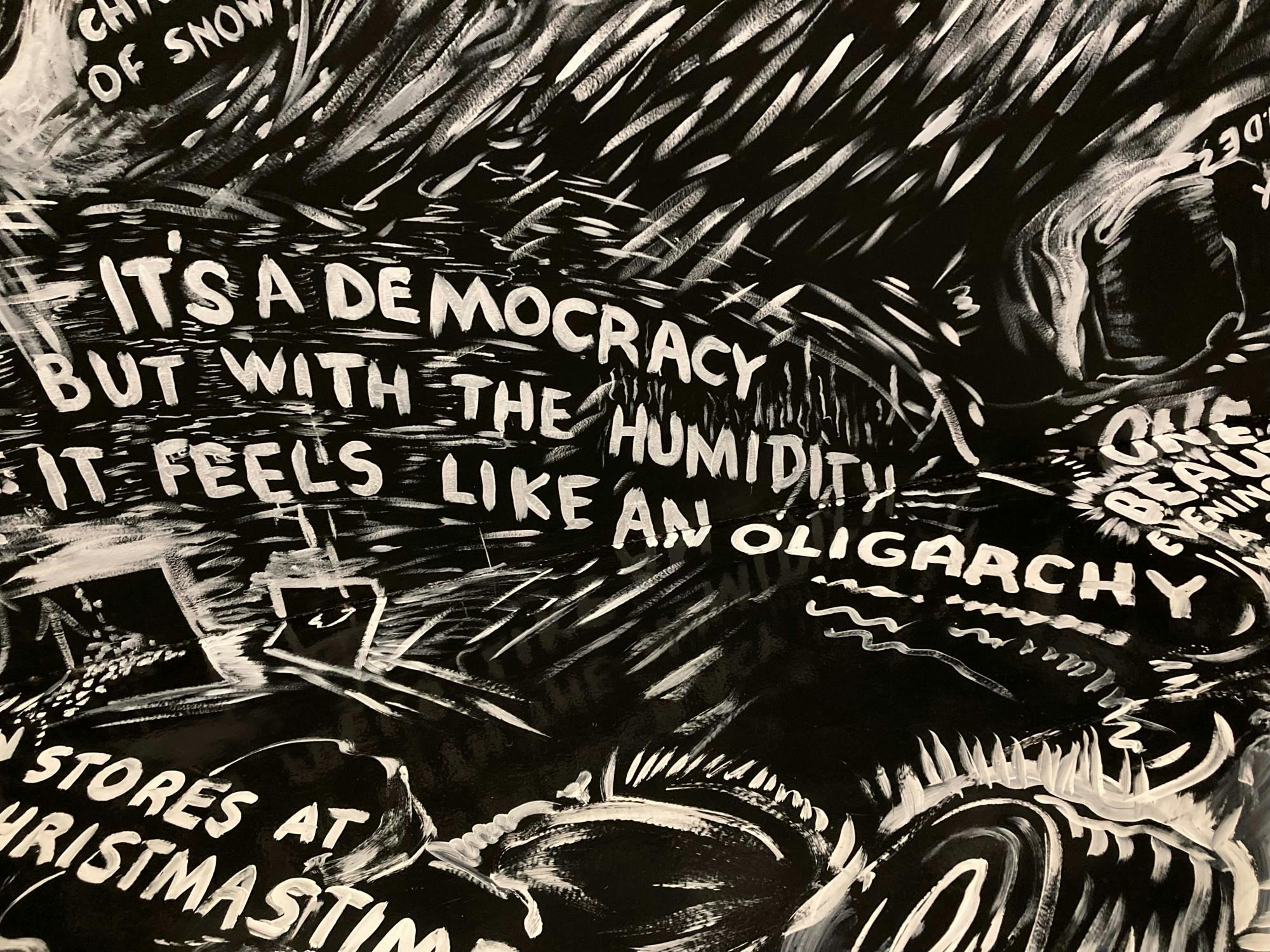Over the last month, various students interning in Washington D.C. have spent time hopping from museum to museum, reveling in the National Gallery of Art, the Hirshhorn and the Smithsonian museums as arbiters of history. Gazing at unfinished portraits of U.S. presidents in the National Portrait Gallery or indulging in the abstract modern exhibits of the Hirshhorn have brought to life the historical anecdotes previously heard in class, according to some students.
“It feels like everything in D.C. is coded in the layer of historical significance that make exhibitions — like the presidential portraits — really special to experience in our nation's capital,” Akhand Dugar ’25 said.
The presidential portraits, a favorite within the cohort, reside in the National Portrait Gallery of the Smithsonian Institution. Particularly, Gilbert Stuart’s unfinished portrait of George Washington entitled the “Athenaeum.”
“Walking through the galleries is literally walking through history,” Dylan Griffith ’25 said. “Seeing unfinished pictures on the wall is something I could only see in D.C.”
The museums in D.C. transcend beyond traditional exhibits. Historical presidential portraits offer a breadth of opportunities to interact with a variety of styles and disciplines. The Hirshhorn Museum is known for exploring the art and ideas of contemporary times and is filled with abstract exhibits such as Yayoi Kusama’s infinity mirrors.
“The mirrors were really cool and fun to look at but the one that I liked more was there was a Laurie Anderson exhibit,” Sophie Saraisky ’25 said. “You just walk into a room painted black and then the floor to ceiling of the walls is covered in drawings with random thoughts she’s had. one of the thoughts that she painted that stood out to me was ‘it’s a democracy, but with humidity, it feels like an oligarchy.’”
Featured at the Hirshhorn, Laurie Anderson’s work is called “The Weather.” It is a multimedia sound and spatial exhibit accompanied by live performances.
“It doesn't really make sense, but it just kind of makes you giggle, but it's also kind of unsettling in a weird way and it just makes you think,” Saraisky said.
The National Gallery of Art currently has on display an exhibit titled “Afro-Atlantic Histories.” The exhibit starts from the 17th century and traces the complex history of the African diaspora. The works range from newly imagined sculptures of well-known photos like “The Scourged Back” — depicting a formerly enslaved man known as Gordon — to brand new works by contemporary artists like Aaron Douglass.
“It was an amazing blend of social commentary, history and a variety of media that conveyed the stories behind the African Diaspora,” Prescott Herzog ’25 said.
Daisy Ferrell ’25 described the exhibit as “enlightening” and a cohesive collection of the nature of diaspora itself.
“There was this really complex piece called ‘Whitening’ and it was this bronze sculpture of black boy”, Ferrell said. “He was kneeling and had a bucket of white paint, cascading down on himself. I was in awe of how powerfully it illustrated assimilation in America.”
In D.C., there seems to be a museum for everything, no matter how niche the interest. Clark Paolini ’25 said he went to the National Postal Museum.
“I was concerned that I wasn’t the target audience since I lack that prior knowledge. But I found it to be very accessible to visitors who are new to the subject,” Paolini said. “My favorite part so far — I’m hoping to go back and view more exhibits — is the stamp collection, which has literally millions of stamps but is organized in an intuitive way.”
Art doesn’t just stop at stamps, however. The Natural History Museum is filled with butterfly pavilions, live insects and mummy exhibits. With a wide variety of exhibits and themed museums, D.C.’s art scene captivates everyone who interacts with it.
“By far, my favorite place was the National History Museum. I was weirdly fascinated by the mummy exhibit— especially the mummified ox and 3,000-year-old Egyptian,” Vynateya Purimetla ’25 said.
Adam Tobeck ’25 also noted the unique accessibility to historical artifacts featured in the D.C. museum scene, adding that he was able to see the Emancipation Proclamation at the National Archives.
“The document can only see sunlight for a certain period of time, so it was only on display for 36 hours,” Tobeck said. “It was just crazy special to look at this document that I have read so much about.”
The D.C. art scene is also free. Museums are ingrained into the community and facilitate regular conversations with history.
“I can literally waltz in at the end of the work day for a brief visit,” Paolini said.
Museums have become a point of gathering to reflect on the past, hope for the future, or simply look at creative works that inspire.
“The D.C. scene is simply one-of-a-kind with high-quality, free educational entertainment. It’s a testament to the value of publicly-funded museums,” Purimetla said.
Correction appended (July 8, 12:20 p.m.): A previous version of this article incorrectly described the photo that inspired a sculpture in the National Gallery of Art's Afro-Atlantic Histories exhibit. The photo is titled “The Scourged Back” and is attributed to McPherson & Oliver. The article has been updated.




